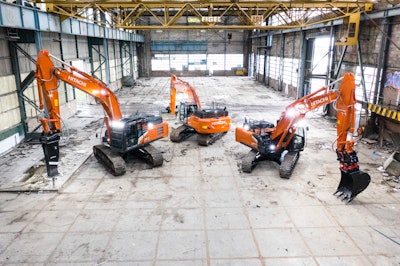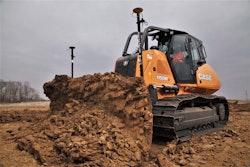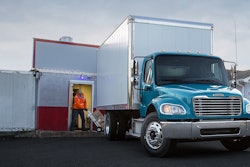
Editor's note: This story was updated August 20, 2021.
John Deere and Hitachi are dissolving their joint venture of more than 30 years for manufacturing excavators in North and South America.
After February 28, 2022, Hitachi Construction Machinery Americas will stand on its own for distribution and sales of its brand excavators on the two continents. Hitachi plans to manufacture all of its excavators, as well as its wheel loaders and mining equipment, in Japan, and then import them to the North and South American markets.
HCMA also plans to introduce new equipment to the markets, which the company says will have “cutting-edge technologies that increase efficiency and safety while lowering total cost of ownership.” Those technologies include advanced hydraulic and safety systems, “internet of things” services and telematics.
The two companies own a joint plant in Kernersville, N.C., where Deere and Hitachi hydraulic excavators of 13 to 47 metric tons are produced. They also own plants in British Columbia, Canada, and Brazil.
HCMA CEO Alan Quinn said in an interview with Equipment World that Deere will purchase the factories. He added that parent company Hitachi Construction Machinery and Deere have entered into a supply agreement in which Hitachi will continue to provide the excavator kits for Deere to assemble excavators after February 28.
Deere says it will purchase all of the joint-venture factories and continue to produce Deere branded excavators there. And it will continue to offer its excavators through a supply agreement with Hitachi, subject to regulatory and other customary approvals.
Deere will also acquire the intellectual property license to continue manufacturing Deere-branded models indefinitely, according to the company’s third-quarter financial report presentation released Friday. Deere will enter a “long-term supply agreement with Hitachi to source and manufacture the current products at existing locations,” the presentation says.
The presentation says the acquisition of factories and intellectual property will cost $275 million.
Deere says the acquisition will enhance its strategic position and financial profile and enable a transition with minimal disruption to customers and operations.
HCMA plans to keep its regional headquarters in Newnan, Georgia, where Quinn says it also plans to add 75 to 80 employees. About 60 of those positions would be local hires, he said. Positions will range from sales, distribution, dealer service, marketing – across the board, he says.
The company is also seeking a place for a parts distribution center, which Quinn said would be about 400,000 square feet and have about $150 million in parts stock.
HCMA will operate as a wholly owned subsidiary of Hitachi Construction Machinery, based in Japan. Hitachi Construction Machinery Loaders America, formed in 2017 after the company purchased KCM wheel loaders, will also be part of the HCMA umbrella, and “Loader” will be dropped from the name, Quinn said.
Deere and Hitachi began forging a supply relationship in the 1960s. They formed the Deere-Hitachi Construction Corporation in Kernersville in 1988. In 1998, they started a “Base USA” strategy in which the same models were built for both brands at the plant. The joint venture later branched out with an excavator plant in Canada and a forestry excavator factory in Brazil.
For Hitachi, the collaboration gave it Deere’s well-established dealer and distribution network, and Deere benefited from Hitachi’s design and manufacturing expertise. Hitachi is one of the top-selling excavator manufacturers in the world. It started mass production of cable-operated shovels in 1950, and in 1965, produced the first hydraulic excavator in Japan with entirely Japanese technologies, according to the company’s history.
John Stone, president of John Deere Construction & Forestry Division and Power Systems, said the company is heading into a new chapter of Deere-designed excavators, and that it remains committed to its customers.
"Looking to the future, John Deere will build on our legacy of quality and productivity and accelerate development of industry-leading technology and machinery that answers the fundamental need for smarter, safer and more sustainable construction so our customers can shape tomorrow's world," Stone said.
Quinn joined Hitachi in 2017, and he says the goal in the ensuing years has been to position Hitachi to build its brand in the Americas to match its global standing.
“Globally, Hitachi is either number one or number two in excavators around the world, and the brand name and the technology that Hitachi brings to the market, they really want to be recognized everywhere in the world for who they are,” Quinn said. “And the Americas, we were kind of losing some of that Hitachi brand visibility. And we just really felt like, we've got so much to offer, that we really wanted to make sure that we were able to connect with the customers and build a distribution network that everybody get what we had.”
Building that distribution network will be a challenge. But it already has a base of 60 wheel loader dealerships in the U.S. Quinn said the company is looking for an opportunity to disrupt distribution in the construction equipment industry.
“I think that we're in a perfect place to really be one of those disruptors in innovation and really capture some of the new ways of doing business and looking after our customers,” he said.
As for moving production to Japan, Quinn said that today’s machines are more standardized than they were 10 to 15 years ago.
“Today, the markets have become a lot more competitive. The technology is higher, but also the machines are more standardized,” he says. “And that’s really made it a little bit more cost effective and actually more customer friendly for us to bring it directly from Japan.”
As for the new excavators, he said Hitachi will be able to bring all of its technologies and other features to differentiate its machines in the Americas.
“We get to make sure that all the equipment we sell has all of the technology available at Hitachi today,” he said. “So we're going to differentiate the products that we bring by incorporating everything that we have to offer.”
Hitachi said new equipment would be introduced in the Americas in Spring 2022.
Quinn noted that the company’s wheel loaders and mining excavators and trucks are part of the new HCMA and that includes South American markets as well. Quinn said a separate mining division would be housed at the Newnan headquarters. The goal also includes increasing the company’s rental and used equipment market presence and global usage of its ConSite telematics services.
Quinn said the decision to dissolve the joint venture involved both companies.
“The way the agreement was set up, it was not really possible for one side to break it without the other,” he said. “So I would give Deere credit that I think that the discussions were positive, and then we worked through an effective way for both sides to move forward.”
As for the mood at Hitachi, he said, “we're really celebrating.”
“It feels for us like the skies have opened up,” he added. “And we can do everything in our power to build the Hitachi brand in North America. And that's really what we want as a global construction brand.”
When asked what he expected five years from now for HCMA, he replied:
“I expect that the world will have changed to the point when they talk about the big three or the big four, even in North America, it will be Cat, Komatsu, Deere and Hitachi, and Hitachi will be right there.”
“One of the things that we've seen with the history is that the product’s great,” he said. “Deere has sold a lot of excavators. And now it's time for us to show directly what we've got.”
Stone, of Deere, said the joint venture has been successful and benefited the company for decades. The company plans to introduce a new strategy for excavators.
“Our new strategy will allow us to leverage our own technology and designs specifically focused on the markets that matter most to us,” he said during Deere’s third-quarter earnings call Friday.
Deere has been investing in “proprietary excavator designs for well over a decade serving markets outside of the Americas,” he said. “We have plans to introduce our next generation of excavators in the Americas in a timeline that complements our supply agreement with Hitachi.”
The supply agreement is expected to increase earnings in its first year, and Deere plans to increase its excavator market share and profit margins in North and South America.
“As we're able to introduce Deere designs and Deere technology in the future, we see that really as further upside to both margin and share in a really important segment,” he said.












